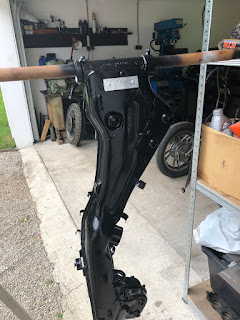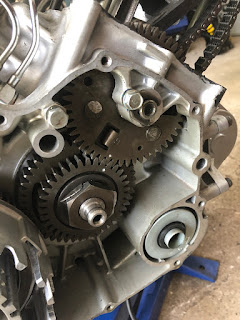It's been a while since the old VX800 moved in into my dad's garage to get her ready to go on the road again.
In order to achieve this (moderate) goal, I will not lie, but the fuel tank had to be welded three times. (Don't laugh you haven't seen the other addition to the fleet yet!)
The other "mildly" interesting feature was that the front pads were COMPLETELY covered in oil, but the fork isn't leaking any or showing any signs that it did so in the past. The caliper is super easy to take apart, just a tip, the rear pad comes out second and then it's easy sailing.
Brake fluid looked well seasoned, but interestingly nothing was seized or the like.
Talking about those brakepads - I read on a forum a while ago, that if you heat them up for a prolonged period of time, the oil will cook out. My dad and I tried that out on the barbeque and admittedly we haven't put them back in, but the oil was forming drops on the side of the pads, so it must have worked to some extent.
Last and definitely not least, the original orange fog-light-substitutes had to go. Instantly. Also they were only present on the front and some weird ones were fitted to the rear. A universal flasher relay was necessary as well to actually make them go, but that's only minor stuff.
So what's she like to ride and I tell you, it's a very, very gentle bike. No big surprises there, perfect daily-driver material, if you wanted a v-twin that can do everything from Autobahn to cruising, yep this one will be it.
The handling, after pumping up the front tyre to stupid pressure (3 bar) it stopped feeling like the bars were connected to the forks with rubber bands. The engine, oh the engine is sweet once warmed up it easily revs to 9000 or even 9500rpm. Not that there's anything dramatic happening up there, but you know... better have those RPMs in the backpocket and not need them, rather than the other way round. And that's a pretty good way to describe the whole bike - just... no pressure, do as you please.





















